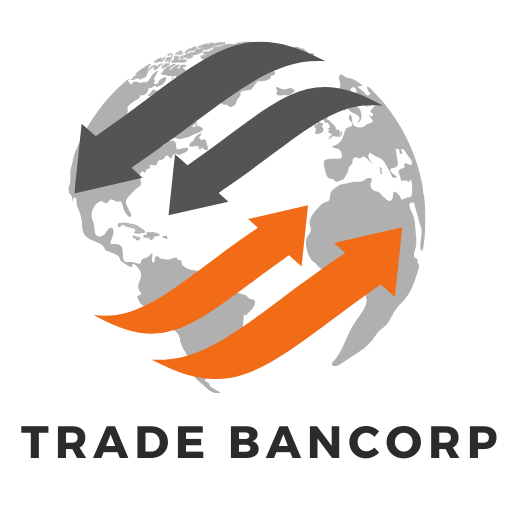Trade Finance and Global Supply Chains: Enabling International Trade Flows

Image by senivpetro on Freepik Global supply chains are the backbone of modern trade, connecting manufacturers, suppliers, and buyers across continents. But these complex networks are vulnerable to risks—such as delays, currency fluctuations, and non-payment—that can disrupt trade flows. Trade finance solutions act as a stabilizing force, helping businesses bridge financial gaps, manage risks, and ensure smooth international transactions. Understanding how trade finance enables global supply chains is essential for businesses aiming to thrive in international markets. In this article, we’ll explore how trade finance plays a pivotal role in keeping global supply chains running seamlessly. You’ll gain insights into the challenges businesses face in managing cross-border operations and discover effective financial strategies that mitigate risks. Whether you’re a supplier, importer, or logistics provider, you’ll leave with practical knowledge to optimize your supply chain with trade finance solutions. Picture this: a South Korean electronics manufacturer is counting on a shipment of raw materials from a supplier in Malaysia to meet production deadlines for an important client. However, a delay in receiving payment disrupts the supplier’s operations, throwing the entire production schedule off track. As days pass, penalties accumulate, customer relationships are strained, and cash flow is squeezed at both ends. This is the reality many businesses face in global supply chains—small delays or financial gaps can cascade into major disruptions. Trade finance ensures these vulnerabilities are managed, making sure suppliers are paid on time and buyers receive goods without hiccups, securing the trust that powers global commerce. Here’s an interesting fact: 80-90% of world trade relies on trade finance. Without these financial instruments, many of the goods we rely on—like smartphones, food, and cars—would struggle to move across borders efficiently! Keep reading to uncover the ways trade finance solutions, such as letters of credit, supply chain financing, and payment guarantees, help companies overcome financial risks in cross-border transactions. You’ll also learn how innovative fintech solutions are transforming supply chains by providing faster and more transparent financial services. 1. Optimize Cash Flow with Supply Chain Finance: Supply chain finance, particularly reverse factoring, allows suppliers to receive early payments, easing their cash flow constraints. At the same time, your business benefits from extended payment terms, improving working capital management without straining supplier relationships. This win-win strategy strengthens partnerships while keeping your cash flow optimized for day-to-day operations and growth initiatives. 2. Mitigate Risks with Letters of Credit: Letters of Credit (LCs) act as a financial safety net, ensuring that payment is only released once the agreed conditions are met, such as the delivery of goods. This instrument helps mitigate risks by shifting payment responsibility from the buyer to the issuing bank, protecting both parties in international transactions. With LCs, businesses can trade confidently across borders, knowing their financial interests are safeguarded. 3. Use Payment Guarantees for Trust-Building: Offering payment guarantees demonstrates your commitment to honoring financial obligations, helping to build trust with international partners. These guarantees assure suppliers or service providers that they will receive payment even if unforeseen financial challenges arise. Strengthening these relationships through guarantees can lead to better terms, smoother negotiations, and long-term collaborations. 4. Explore Digital Trade Finance Platforms: Fintech platforms provide innovative trade finance solutions, including real-time tracking, automated invoicing, and digital payment options. These platforms streamline international transactions, reducing paperwork, delays, and manual errors, while also offering faster access to financing. Embracing digital tools enhances transparency and efficiency in your supply chain, giving your business a competitive edge. 5. Plan for Currency Risks: Currency fluctuations can erode profit margins, but hedging tools like forward contracts allow you to lock in exchange rates in advance. This proactive strategy shields your business from unpredictable currency shifts, ensuring stable pricing and protecting your bottom line. Planning ahead for currency risks provides greater financial predictability, especially in volatile markets. Ready to strengthen your global supply chain with the right trade finance solutions? Our team of experts can help you implement financial instruments that optimize cash flow, mitigate risks, and ensure smooth cross-border operations. Contact us today to learn more about how we can support your international trade flows and keep your supply chain running smoothly!
Trade Finance in Emerging Markets: Navigating Challenges, Seizing Opportunities

Trade Finance in Emerging Markets: A Thrilling Ride Through Challenges and Opportunities
Emerging markets are like the wild frontiers of global trade—packed with untapped potential, but not without their fair share of bumps along the way. From currency swings to regulatory hurdles, businesses brave unpredictable waters, but those who navigate them well can unlock game-changing opportunities. It’s a high-stakes adventure where trade finance becomes the trusty compass, guiding exporters, importers, and financiers to success. Ready to explore how these markets are transforming global trade? Buckle up for a journey through risks, rewards, and everything in between!
Trade Finance Risks and Risk Mitigation Strategies
In the fast-paced world of international trade, risks are inevitable—but with the right strategies, they don’t have to be deal breakers. From currency fluctuations and geopolitical uncertainties to payment defaults, trade finance is riddled with potential pitfalls. In this blog, we’ll uncover the most common risks businesses face and explore smart, practical mitigation strategies to protect your transactions. Whether you’re a seasoned exporter or a newcomer to global trade, understanding how to manage these risks can mean the difference between smooth sailing and costly setbacks. Let’s dive into the world of trade finance risks and arm your business with the tools it needs to trade confidently across borders.
Trade Finance Documentation: A Guide to Key Documents in International Trade
International trade is a complex process that involves the exchange of goods and services between countries. At the core of international trade are various documents that play a crucial role in facilitating transactions, ensuring compliance with regulations, and minimizing risks. These documents include invoices, packing lists, bills of lading, certificates of origin, and insurance documents. Each document serves a specific purpose, such as providing proof of shipment, detailing the contents of the shipment, confirming the origin of the goods, and insuring the shipment against loss or damage. Understanding these documents is essential for businesses engaged in international trade to ensure smooth operations and avoid costly mistakes. Trade finance documentation is crucial for facilitating smooth and secure transactions in international trade. With a variety of essential documents, such as Letters of Credit, invoices, and bills of lading, understanding what each document entails can help businesses mitigate risks, ensure compliance, and foster trust between trading partners. This guide will illuminate the key documents involved in trade finance and their respective roles in successful transactions. By reading this article, you will gain a comprehensive understanding of the key trade finance documents, learn their significance in international trade, and discover how proper documentation can safeguard your business interests while streamlining your trading operations. Imagine your business is poised to expand into international markets, filled with excitement and opportunity. But then, a wave of anxiety washes over you as you think about the complexities of foreign regulations and the possibility of misunderstandings with your trading partners. You might worry about payment delays or potential fraud, causing sleepless nights and missed opportunities. The right trade finance documentation acts as your safety net, ensuring that every step of the process is secure and transparent. With the proper documents in hand, you can approach international trade with confidence, knowing that your interests are protected and your transactions are backed by legal assurance. Trivia of the Day: Did you know that the first recorded use of a bill of lading dates back to the 12th century in England? This essential trade document has evolved over the centuries, adapting to the growing complexities of global trade, but its core purpose remains the same: to ensure that goods are transported and delivered as agreed. Continue reading to learn about the specific documents that are essential for successful international trade transactions, how to effectively prepare and utilize them, and tips to avoid common pitfalls in documentation that can lead to costly delays. Familiarize Yourself with Key Documents: Understanding the purpose and requirements of essential trade finance documents is crucial for successful international transactions. Key documents include Letters of Credit, which ensure payment security; commercial invoices, which detail the sale; and certificates of origin, which verify the product’s country of origin. Additionally, familiarize yourself with invoices, bills of lading (B/L), packing lists, insurance certificates, and inspection certificates, as each document plays a vital role in facilitating smooth trade processes and compliance with regulations. Ensure Accuracy and Compliance: Accuracy and compliance are paramount when dealing with international trade documents to avoid disputes and delays. Carefully review all documents for correctness, ensuring they meet local and international regulations, as even minor errors can lead to significant complications. Collaborate closely with your legal and compliance teams to verify that all documentation is complete, up-to-date, and adheres to the specific requirements of the countries involved in the transaction. Maintain Open Communication: Open communication with your trading partners is essential for successful international transactions, as it helps clarify document requirements and resolve any potential issues. By fostering a transparent dialogue, you can quickly address misunderstandings and ensure that all parties are on the same page regarding expectations and obligations. This proactive approach not only builds trust but also contributes to smoother transactions and a more efficient trading process. Additional Key Trade Documents: • Invoices provide a detailed breakdown of the transaction, including the goods or services sold, pricing, and payment terms, serving as an essential record for both buyers and sellers. • Bill of Lading (B/L) acts as a receipt for the goods and a document of title, outlining the carrier’s responsibility to transport the goods and deliver them to the designated destination. • Packing Lists accompany shipments, detailing the contents, packaging, and weight of the goods, which aids in customs clearance and ensures that shipments are received as expected. • Insurance Certificates provide proof of coverage for the goods during transit, protecting against potential losses or damages that may occur along the way. • Inspection Certificates confirm that goods meet specified quality and safety standards before shipment, offering additional assurance to buyers regarding the condition of the products they are purchasing. Ready to take the next step in your international trading journey? Contact us today to learn more about how we can assist you with trade finance documentation and ensure your transactions are secure and efficient. Don’t forget to subscribe to our newsletter for more insights, tips, and updates on navigating the world of international trade. Let’s work together to make your global trade endeavors successful!
The Role of Financial Institutions in Trade Finance
Financial institutions are like the backstage crew in the world of global trade—they make sure everything runs smoothly behind the scenes. They equip businesses with the financial tools needed to navigate the tricky world of international deals, from letters of credit that guarantee payment to currency hedging that protects against wild exchange rate swings. Without them, businesses would be stuck in a risky guessing game, facing delayed payments and missed opportunities to tap into new markets, leaving the show far from the success it could be. You’ll discover how financial institutions not only provide crucial trade finance services but also help businesses reduce risks, enhance security, and ensure smoother transactions in global commerce. Picture this: you’ve just landed that big international deal—the one that could send your business soaring to the next level. But then, reality hits—what if payments don’t arrive on time, shipments get lost at sea, or some other unexpected disaster throws a wrench in the whole thing? Cue financial institutions, swooping in like the ultimate safety net, offering the tools that make sure your deal goes off without a hitch. From guaranteeing payments to ensuring your partners hold up their end of the bargain, they keep your trade flowing smoothly. With them on your side, you can leave the sleepless nights behind and focus on what really matters—growing your business. Trivia of the Day: Did you know that the history of trade finance dates back to the ancient Babylonians? In fact, financial instruments like letters of credit have been used for thousands of years to facilitate trade between distant regions, proving that the need for secure transactions is as old as trade itself! If you keep reading, you’ll learn how financial institutions offer various trade finance tools, like letters of credit, guarantees, and trade credit insurance, that can transform your business by minimizing risk and increasing your chances of success in international markets. Work with a Trusted Financial Institution: When expanding internationally, partnering with a reputable financial institution is crucial. These institutions have the expertise and global networks to guide you through the complexities of cross-border transactions. By building a relationship with a trusted bank or financial provider, you ensure access to reliable advice and tailored solutions that can mitigate risks and support your business growth. Use Letters of Credit (LCs) for Payment Assurance: Letters of Credit are a powerful tool that guarantees payment from the buyer’s bank, as long as the terms of the contract are met. This eliminates the worry of non-payment, allowing you to focus on fulfilling your obligations without fear of financial loss. Whether you’re exporting goods or services, LCs provide a reliable safety net, ensuring that your business receives timely payment for its work. Leverage Standby Letters of Credit (SBLCs) for Added Security: SBLCs act as a secondary guarantee, stepping in if the buyer fails to meet their payment obligations. While LCs ensure payment directly, SBLCs provide a backup in case things go wrong, offering an extra layer of security in high-stakes or high-risk transactions. This added protection can be especially valuable when trading with unfamiliar or economically unstable markets, giving you peace of mind. Explore Trade Credit Insurance to Cover Non-Payment Risks: Trade credit insurance protects your business from the risk of non-payment by buyers, whether due to insolvency, political instability, or other unforeseen events. This insurance enables you to confidently extend credit terms to new or existing customers without fearing financial loss. By covering potential gaps, trade credit insurance helps you maintain cash flow, even if a buyer fails to pay on time. Empower Your Business to Grow with Confidence: With these trade finance solutions in place, you can pursue international growth without hesitation. By mitigating the risks of non-payment and default, your business gains the freedom to explore new markets, build stronger relationships, and secure larger deals. These financial tools act as a foundation, allowing your company to focus on expansion while minimizing exposure to potential setbacks. If you’re looking to expand your business internationally, start by working closely with a trusted financial institution. Seek out services like letters of credit (LCs) to guarantee payments, or standby letters of credit (SBLCs) for an extra layer of security. You can also explore trade credit insurance to safeguard against the risk of non-payment. These solutions are designed to protect your business from uncertainties, giving you the confidence to explore new markets and secure bigger deals.
Introduction to Trade Finance

In today’s interconnected world, international trade is more than just a marketplace—it’s a complex web of relationships, risks, and opportunities. Trade finance plays a pivotal role in facilitating these global transactions, acting as a bridge that connects buyers and sellers across borders. In this blog, we’ll explore how trade finance provides essential tools and solutions to overcome challenges such as payment risks, currency fluctuations, and logistical hurdles. By understanding the mechanisms behind trade finance, you’ll discover how it empowers businesses to expand their reach, enhance liquidity, and ultimately thrive in the competitive landscape of global commerce. Join us as we delve into the vital role of trade finance in shaping the future of international trade!

